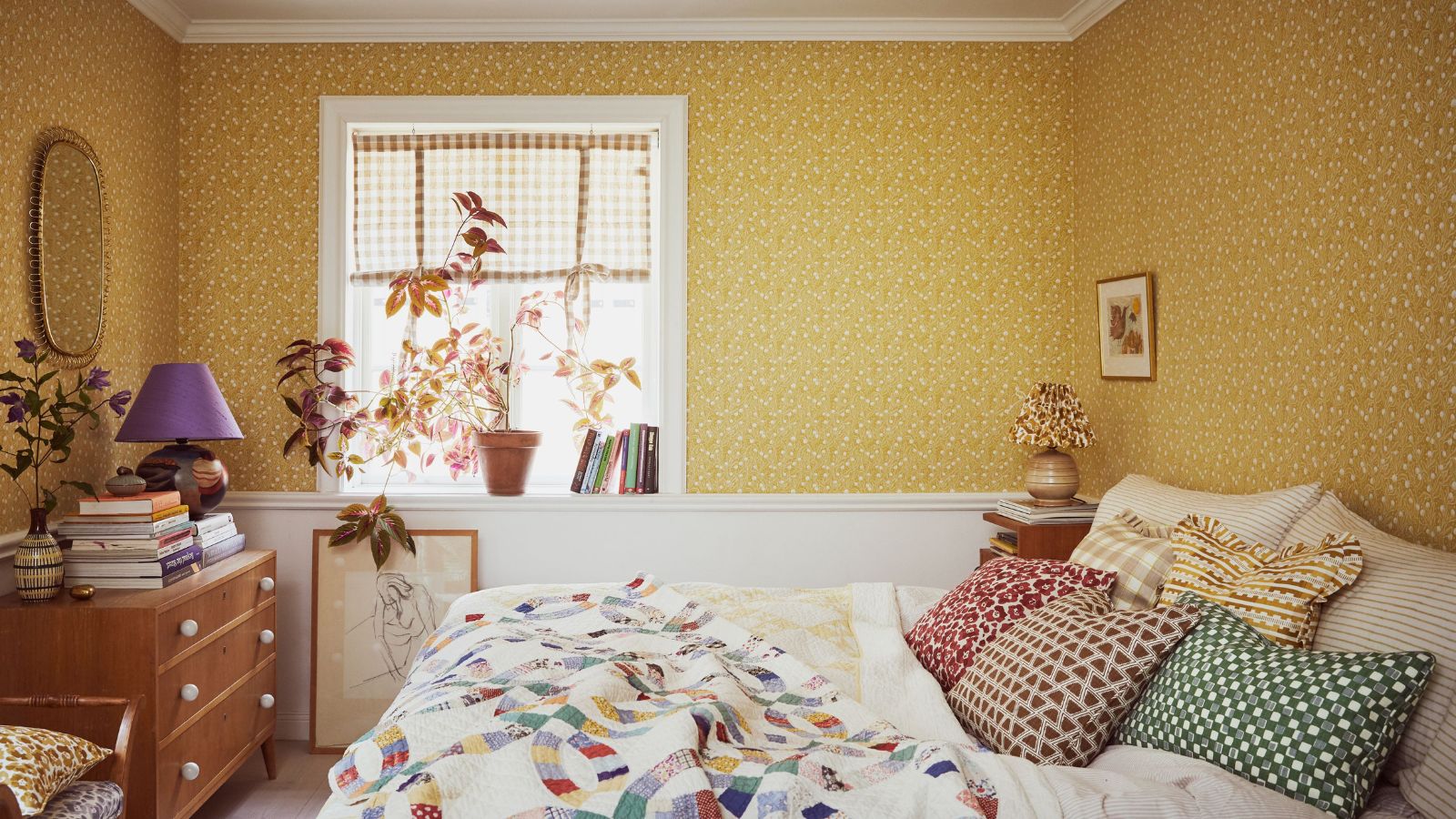
When redesigning a bedroom, it's important to consider the color mistakes that could be affecting how you sleep. As pretty as some colors may be, certain palettes can harm our relaxation and ability to sleep.
There are so many bedroom color ideas to choose from, but opting for a hue that aids sleep rather than disrupts it is key. You may associate certain colors with coziness, but they might not be the soothing hues you need.
'Colors affect how well we sleep because different colors affect mood. Some colors can be more stress-inducing and distract one from winding down for sleep,' says Julia Forbes, certified sleep science coach at Sleep Advisor.
So, how can you know if your bedroom color scheme is the cause of your broken sleep? We've asked leading sleep and color experts to weigh in, and reveal the color mistakes that could be to blame.
5 color mistakes that could be affecting how you sleep
When curating a scheme, we often choose color based on visual appeal, but in a bedroom, it's important to choose hues that feel calming and serene. 'Colors can affect how well we can relax and wind down before going to sleep,' explains Julia Siemen, certified sleep science coach at Sleep Advisor.
'This can be based on personal feelings towards a certain color but also certain colors can affect mood which can be distracting and stressful before going to sleep,' she adds. So, before you start redecorating your bedroom, make sure these hues are not on your list of color options.
1. Black and brown
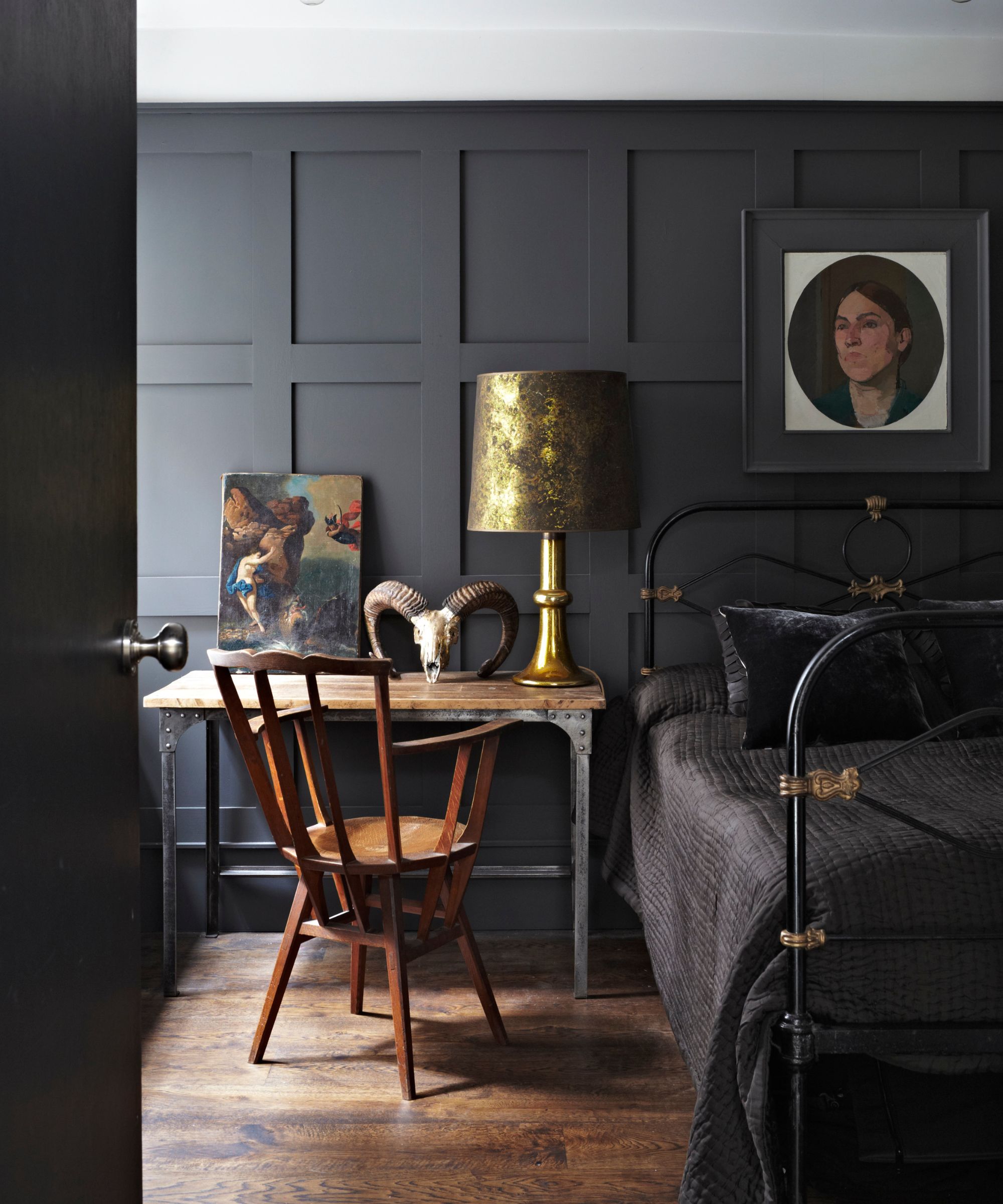
Decorating with moody colors is proving popular, but in a bedroom scheme, choosing dark shades could affect how well you sleep. 'Brown and black can make one feel sad which can also be distracting and make it more difficult to sleep. Ideally, you want to be in a good headspace before bed so you can concentrate on relaxing and fully freeing your mind for optimal sleep,' says Julia Siemen.
'I’d also avoid brown as it can make you feel sad and restless, which can be distracting for sleep as well. Black has a similar effect of bringing down mood. Although you may think darker colors can help with sleep, black can make one feel down, and that makes it difficult to relax and calm down for sleep,' adds Julia Forbes.
Instead, look to more claim hues that offer the same cocooning effect. 'Tans and beiges create a cozy and inviting space, whereas grays are cocooning, reminiscent of a wood cabin retreat. These enveloping hues provide a sense of stability and security,' says Hannah Yeo, senior manager of color marketing at Benjamin Moore.
2. Red
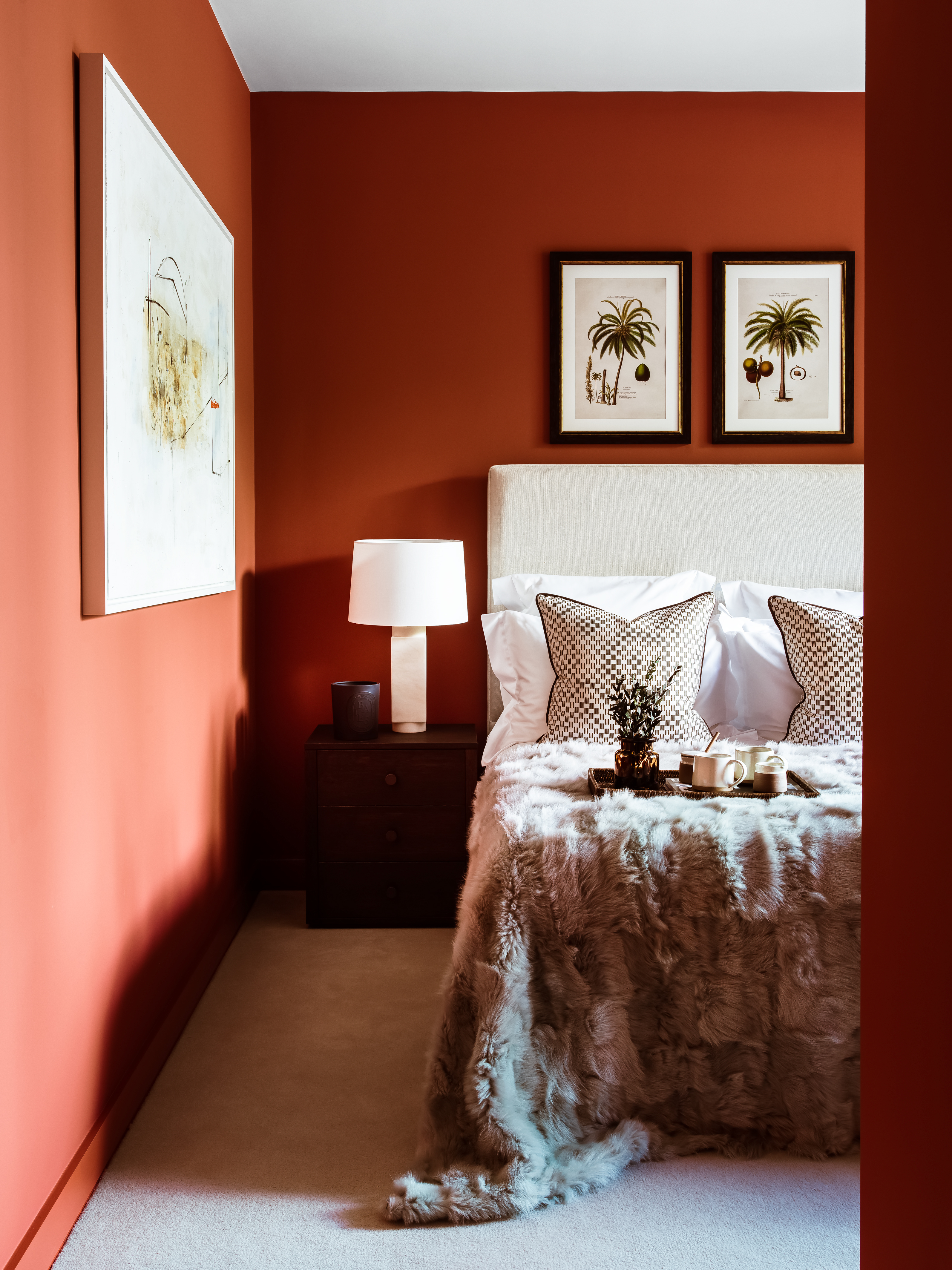
Red has been the focus of recent interior design trends, and although this color adds an eye-catching pop of vibrancy to a scheme, a bedroom might not be the best place to introduce it. This is, of course, dependent on the shade of red you choose, but be mindful to stay away from bright, bold hues.
'I would recommend avoiding any bright colors because they can make you more alert and make it more difficult to calm down before bed,' says Julia Forbes. 'Avoid red as it may increase heart rate and alertness making it more difficult to fall asleep,' she adds.
For an injection of color that won't disrupt your sleep, Hannah suggests 'Quiet Moments 1563, a gentle mix of blue, green and gray that resembles calming water. It exudes tranquility and inspires quiet meditation in any room in the home. Additionally, cool colors recede which makes it a great fit for smaller rooms for an illusion of a larger room.'
3. Purple
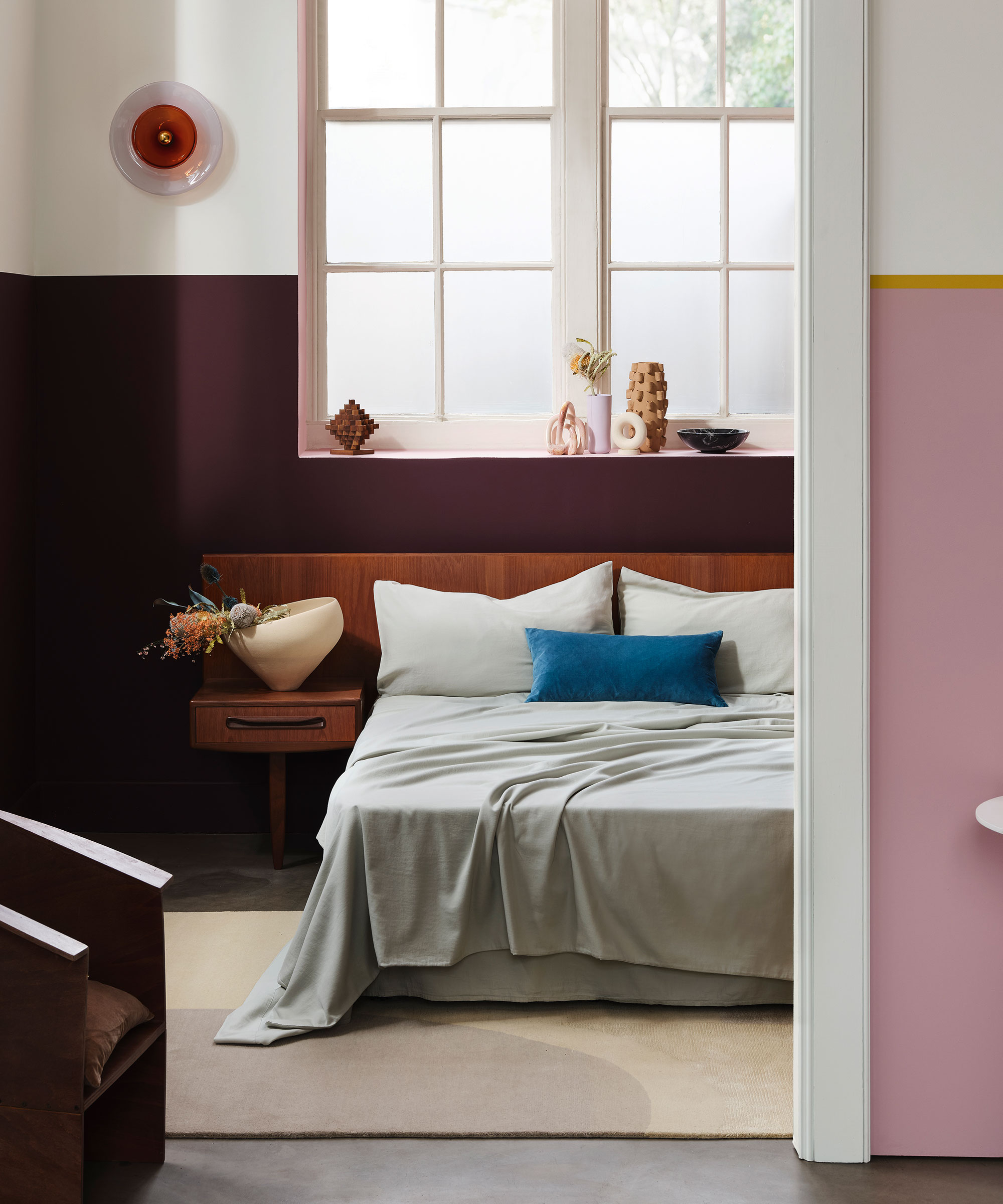
Similarly to red, certain purple hues can affect how well you sleep. Try to avoid dark or overly stark variations of this shade if you want to enjoy a good night's sleep. 'Purple especially a darker shade, has a similar effect as red, it may increase brain activity and heart rate which is not ideal for sleep,' explains Julia Forbes.
Purple is also associated with creativity, so drenching your bedroom in this hue could keep you up at night thinking of your next creative idea. Instead, stick to using purple shades in a home office, where thinking and creating is more encouraged.
For an injecting of color that won't disrupt your sleep, look to blue hues that create a soothing atmosphere. 'Cleaner, brighter blues such as Lulworth Blue will add a fresh breezy pop to a bedroom, especially if blessed with lots of natural light,' says Patrick.
4. Orange
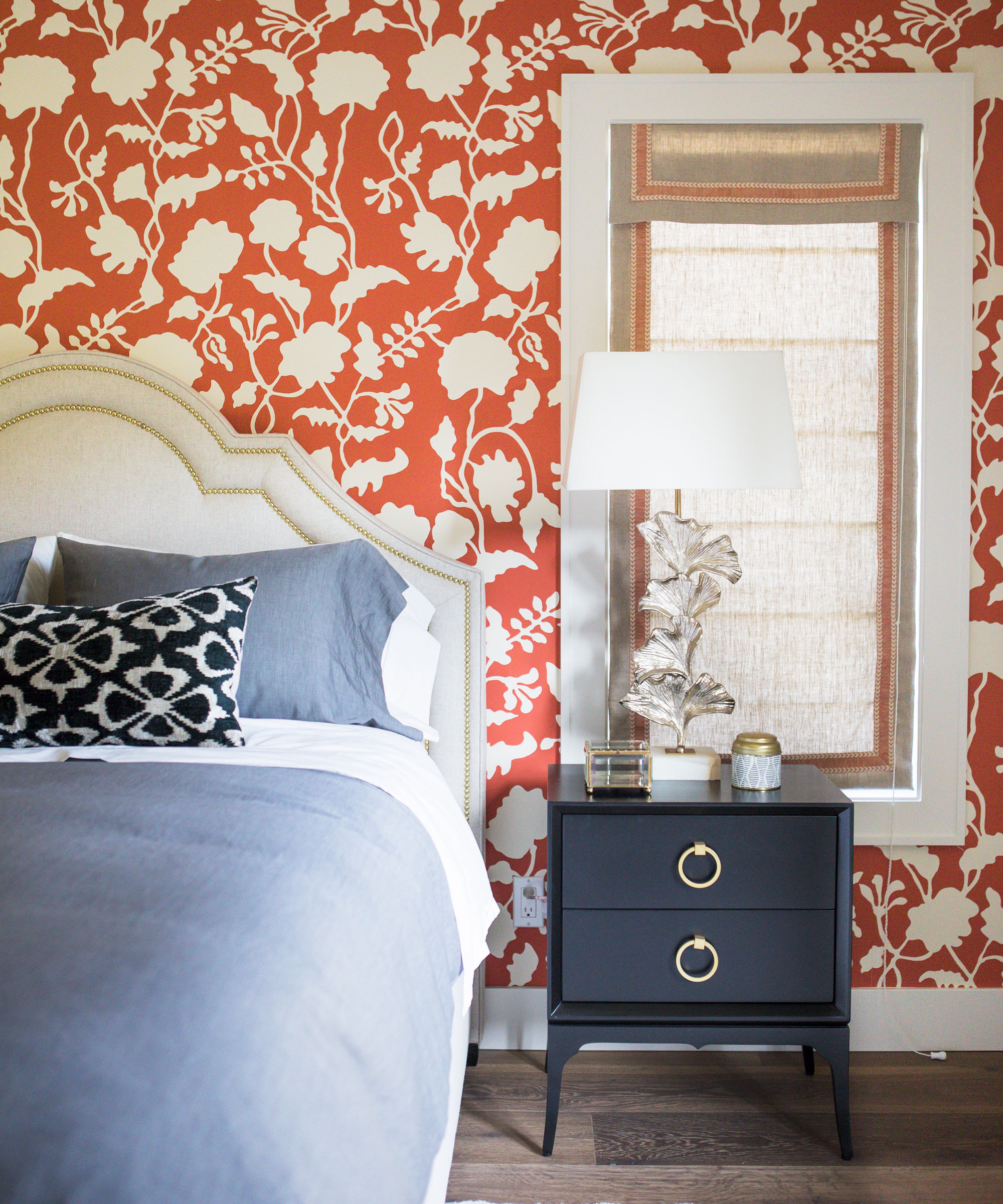
If you were considering an orange bedroom as an alternative to red, you might want to rethink. It seems the effects of bright orange hues are incredibly similar, and won't help you sleep well. 'I would suggest staying away from colors such as red and orange in the bedroom,' says Emily Kantz, color marketing manager at Sherwin Williams.
'These colors raise blood pressure and increase heart rates, so best to avoid these when you want to create a relaxing and serene environment,' she adds. If your heart is set on decorating with orange, consider opting for subtle decor elements in the hue, or try more muted, soft shades that have a calming effect on our senses.
If you choose to add subtle hints of orange through decor, opt for a more neutral hue on the walls. 'Pale Oak OC-20 is a quiet off-white hue that adds a touch of warmth and softness. The gray undertone creates natural harmony especially with wood-tone furnishings, resulting in a tranquil retreat,' explains Hannah.
5. Yellow
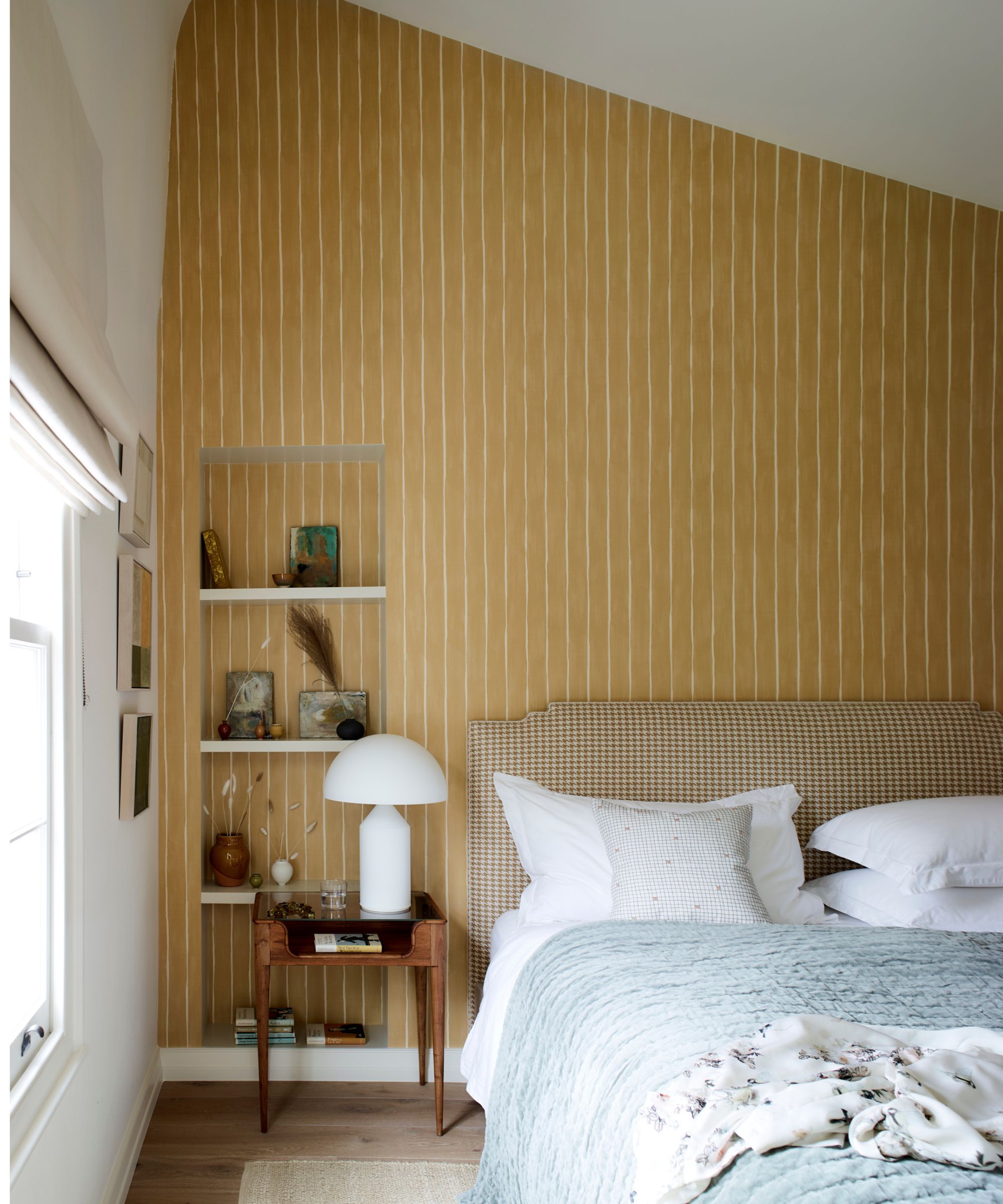
You're probably noticing a pattern with the colors to avoid in a bedroom – they're all bright, bold shades. 'Brilliant, saturated colors are visually stimulating and are more fitting for active, creative spaces,' explains Hannah Yeo, which is why a bedroom isn't the best place for them.
One of the brightest colors to choose, yellow is also a shade to avoid in a bedroom if you're struggling to sleep. 'To ensure a restful night’s sleep, I would also stay away from bold bright yellows, this color mimics the sun and makes it more difficult to fall asleep because your brain is thinking that it’s daytime,' advises Emily.
A great alternative is to instead decorate with green – it's a color heavily associated with summer and the natural environment but offers a more calming effect than yellow. Farrow & Ball's brand ambassador, Patrick O'Donnell suggests 'starting with green, the ‘ultimate’ color group that color psychologists always suggest imbue calm. Look to mid-greens and something a little more nuanced, almost drab, which will feel incredibly restful and make a wonderful choice for a bedroom, such as our classic French Gray.'
Colors evoke different senses, so look to calming hues rather than those associated with high energy and creativity. Of course, there is no right or wrong when it comes to design, and not everyone will find it difficult to sleep in a room drenched in an energetic color. These suggestions of colors that could be affecting how you sleep should be seen as a guide for those struggling to rest well – if you're sleeping peacefully in a bright red bedroom, there's no reason to change it!







